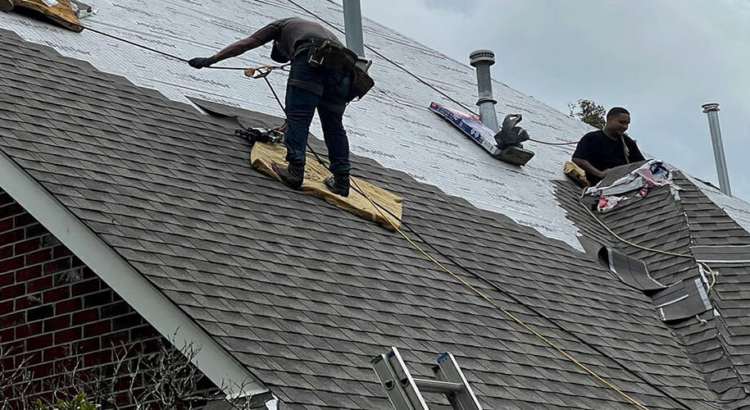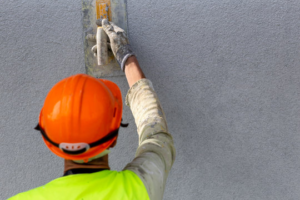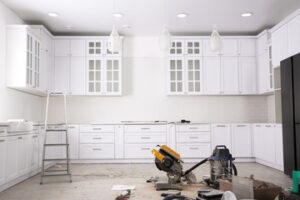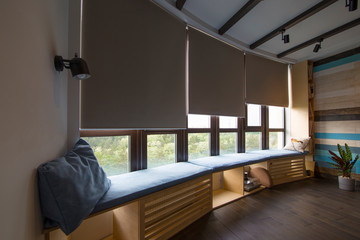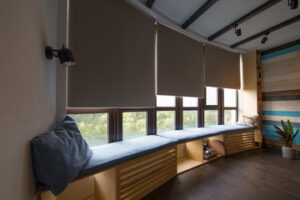The roof is an important part of a building that provides protection from weather conditions. It is also an integral part of the overall aesthetics of a structure.
Roofing is the process of covering a roof with different materials. The most common material used is asphalt shingles. Other options include clay or slate roofs, and even metal. Contact Erie Roofing now!
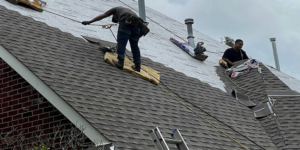
Roofing materials are the outer layer that protects a home or commercial building from the natural elements. The different types of roofing materials offer unique style and color options that can complement or revitalize the existing architecture of a building. Roofing materials can be natural products such as thatch and slate, or man-made materials like metal, tile and concrete. The different roof types also provide varying degrees of durability.
The most popular types of residential roofing are single-membrane systems like EPDM, TPO and PVC. These offer a balance of affordability, durability and energy efficiency, as well as good water resistance. Asphalt shingles are another common type of roofing material. These are generally affordable, durable and come in a variety of colors and styles that can complement many architectural designs.
Wood shingles and shakes are more traditional roofing materials, offering a rustic look to your house. These materials are usually made from redwood or cedar. Shingles are thin wedge-shaped slabs of wood produced by precise sawing, while shakes are thicker and have a rough texture. Both offer a natural look to your house and can last up to 30 years, depending on the environmental conditions and maintenance.
Metal is a more modern roofing material that is resistant to extreme weather conditions, and it comes in a wide range of colors. Metal roofs are typically constructed from galvanized steel, aluminum-zinc alloy called Galvalume or aluminum. Standing seam metal roofs feature panels that lock into each other, providing strength and durability. These roofs are often adorned with decorative elements, like cupolas and bay windows, for added style.
Concrete and clay tiles are a great choice for homes located in areas that are exposed to high winds and storms, as they are designed to withstand the impact of debris. These roofing materials are fairly expensive, but they can add a beautiful aesthetic to your home and increase its value.
Rubber is a good alternative to other roofing materials, as it offers an environmentally-friendly and durable material. It is also a popular choice for flat roofs, as it can be molded to fit the shape of the structure and can be layered with other materials like gravel, tar or insulation.
Installation
A building’s roof is an important component that keeps inhabitants safe from the elements. Installing a new roof can be a lengthy process, and there are several steps involved. The first step is to prepare the site. This involves protecting surrounding areas with tarps, covering any landscaping, and positioning garbage cans so that they’re not blocked by debris falling from the roof. Safety measures must also be taken to ensure that workers are not injured during the re-roofing process.
Once the site is ready, the actual installation process begins. First, the existing shingles and underlayment are stripped off the roof. This is a messy and noisy process, and it can damage the underlying structure of the roof. Once the old materials are removed, the contractor will begin to waterproof the valleys, which are the areas where the roof slopes meet and form a “V” shape. This is done by adding in a layer of underlayment and felt paper, which is similar to how shingles are installed.
Next, a shingle course is laid. The contractors will start at the bottom of the roof and work their way up, overlapping each row by about six inches and nailing them down with a pattern that’s closer together near the edge of the shingle and then gets farther apart as you get toward the middle. The shingles are then trimmed to remove any excess and give the roof a clean finish. Other tasks that a roofing contractor may be responsible for include: setting up equipment and supplies, meeting with customers, and handling accounting matters.
Maintenance
A building’s roof is its primary barrier to the elements, and as such it must be inspected regularly for signs of damage and to catch small problems before they escalate. This maintenance is particularly important during the hot and humid summer months, when the potential for sun damage is greatest, and after major weather events, such as hurricanes and tornadoes, when leaks caused by melting ice and snow are most likely to occur.
There are also seasonal maintenance items to consider, such as trimming tree branches that hang over the roof. Branches that hang low are at risk of scraping the surface of shingles during heavy windstorms, and can weaken them over time. It’s a good idea to trim them on an annual basis, or more often if there is a lot of growth.
Keeping the roof free of debris is also important, because it can block water from reaching the roof drains and can cause localized ponding that can lead to premature roof damage. It’s a good idea to inspect and clean out the gutters at least twice per year, and more frequently in fall when leaves can accumulate.
Another important item to address is the integrity of the flashing around chimneys and vent pipes, as well as shingles and other components. The caulk around these is designed to limit water leaks, and should be inspected on a regular basis for cracking or peeling. In addition, it is a good idea to inspect the flashing for any areas where moss or lichen have accumulated, as they can indicate that the underlying material is decaying.
Repairs
Whether a storm damaged some shingles or you’re looking to repair leaks or other issues, the roof is a major part of your home and shouldn’t be ignored. Roofing repairs can range from replacing a few damaged shingles to extensive structural work. The cost will depend on the extent of the repair and the materials used. Generally, repairing damage rather than re-roofing will be less expensive.
To find out the best option for you and your roof, consider these points:
The Extent of the Damage
During a visual inspection, your professional will look for shingle damage like cracks or holes. These can be caused by weather, wear and tear, or even animals. Leaking shingles are the most common issue and should be repaired immediately. If left untreated, a small leak can lead to interior damage and mold problems.
Other issues that need to be addressed include:
Pipe Boots (Metal Pipe Collars)
Pipe collars are a key component of a roof’s structure. They help vent household equipment like dryers and water heaters by directing vapor and exhaust away from the house. They also seal the area where the pipe penetrates the roof, preventing water from entering. Repairing these components requires the careful removal of shingles and flashing without damaging adjoining areas.
The nature of the repair itself also impacts the cost. Detailed work or the use of higher-quality or specialty materials will increase the price.
Structural Changes
If you’re undergoing significant structural changes to your roof, such as adding solar panels, you may need a permit from the city. In addition, if your home is in a landmark district or is a historic building, special approvals and guidelines apply.
Re-Roofing
A re-roof is an alternative to replacement and consists of superimposing new shingles over the existing shingles. It’s typically a more economical choice, but it’s important to assess the condition of your existing shingles and support system in advance of this project. Additionally, re-roofing can void or shorten your warranty on your new shingles.
